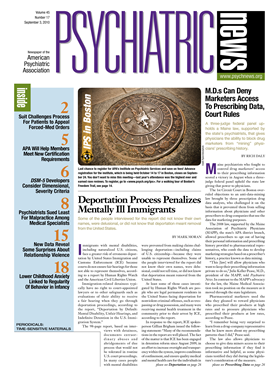Partly in response to criticism that some medical devices are reaching the market without being proven safe and effective, the Food and Drug Administration is recommending broad reforms to its processes for device approval.
The FDA's Center for Devices and Radiological Health (CDRH) released two reports in August under the title, “CDRH Preliminary Internal Evaluations.” One report focuses on ways to strengthen and clarify a premarket review process called the 510(k) program, while the other evaluates CDRH's use of science in decision-making leading to device approval.
The two reports, which overlap and cross-reference each other, are at least partly in response to criticisms from within and outside the Obama administration about the process for device approval—especially the so-called 510(k) program, reserved for medical devices that do not need to undergo a full premarket approval review if they are “substantially equivalent” to an existing marketed device. In July, the consumer watchdog group Public Citizen released a report focusing on the 510(k) program, saying it allowed some devices—including devices for psychiatric treatment—to be marketed without sufficient proof of safety and efficacy (Psychiatric News, August 20).
Recommendations in the new FDA internal evaluations include the following:
•.
Reforming 510(k): CDRH should consider revising regulations to explicitly require 510(k) submitters to provide a summary of all scientific information known or that the submitter should reasonably know regarding the safety and effectiveness of the device under review. This is not required now for 510(k) submissions, and as a result, relevant information may not be included in an initial submission.
•.
Streamlining and Clarifying the “De Novo” Process: The so-called “de novo” approval process needs to be streamlined. Moreover, expectations for manufacturers seeking approval through this process need to be clarified. De novo approval is reserved for lower-risk novel devices that cannot be cleared through the 510(k) process because there is no “substantially equivalent” existing device, but that do not warrant the more rigorous premarket approval review applied to higher-risk devices.
•.
Improved Use of Experts: CDRH should make better use of scientific experts outside of the agency by developing a Web-based network of external experts using social media technology. This network would help CDRH staff leverage experts' knowledge without serving in an advisory capacity.
•.
Utilizing Public Databases and Improving Transparency: CDRH should build upon public databases to include meaningful, up-to-date information that supports good decision making and promotes the safe use of devices. This could be accomplished by improving the current 510(k) database so that it includes summaries of FDA review decisions, current labeling, and photos. Moreover, CDRH can build upon the existing transparency Web site to provide more immediate information on how devices are regulated.
In a statement released on the FDA Web site, CDRH Director Jeffrey Shuren, M.D., said that the recommendations are preliminary and that CDRH has not made any decisions on specific changes to pursue.
“We invite interested individuals to submit comments on these reports and the recommendations they propose, including the feasibility of implementation and potential alternatives,” Shuren said. “Once our assessment of public input and other necessary reviews are completed, we will announce which improvements we intend to implement, as well as projected timelines for implementation.”
